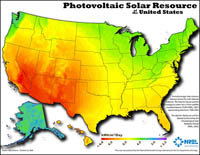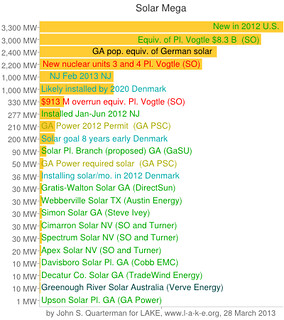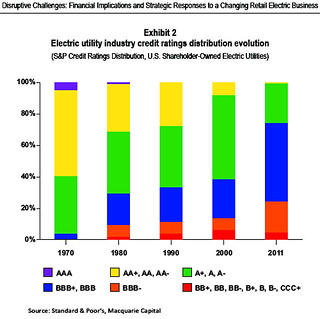As long as we leave it to Georgia Power and Southern Company, Georgia will remain far behind in solar power jobs, profits, and energy independence. Hear Southern Company CEO Thomas A. Fanning say:
We remain very bullish on solar. When we think about renewables, I think renewables are exceedingly important to this nation’s future. My sense is until we see significant technology innovation, my sense is that that will probably very late in this decade or beyond that, we still are gonna get by far the lion’s share of electricity from central stations.
SO’s “bullish on solar” means nuclear, “clean coal”, and natural gas
big baseload power stations, and forget about solar or wind.
That’s why
 Georgia Power has raised customer rates to pay for gas and nuclear plants
while complaining about solar.
Here’s Georgia Power CEO Paul Bowers:
Georgia Power has raised customer rates to pay for gas and nuclear plants
while complaining about solar.
Here’s Georgia Power CEO Paul Bowers:
“Renewable (energy sources are) going to have a sliver,” Bowers said of fuels to create electricity. “Is it going to be 2 or 4 percent? That’s yet to be determined. Economics will drive that. But you always remember (that renewable energy is) an intermittent resource. It’s not one you can depend on 100 percent of the time.”
What is to be done?
-jsq











